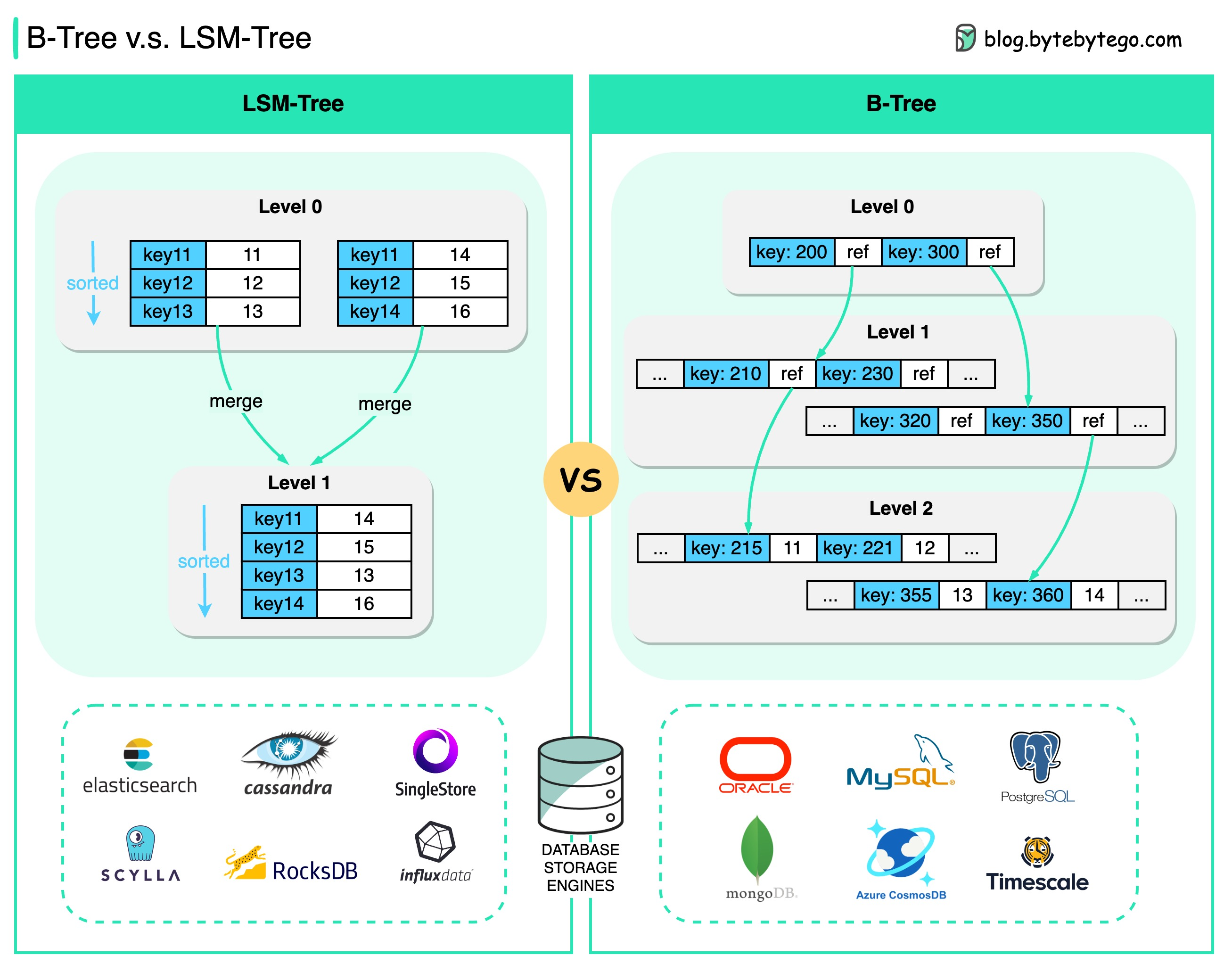Explore the differences between B-Tree and LSM-Tree data structures.

B-Tree is the most widely used indexing data structure in almost all relational databases.
The basic unit of information storage in B-Tree is usually called a “page”. Looking up a key traces down the range of keys until the actual value is found.
LSM-Tree (Log-Structured Merge Tree) is widely used by many NoSQL databases, such as Cassandra, LevelDB, and RocksDB.
LSM-trees maintain key-value pairs and are persisted to disk using a Sorted Strings Table (SSTable), in which the keys are sorted.
Level 0 segments are periodically merged into Level 1 segments. This process is called compaction.
The biggest difference is probably this:
B-Tree enables faster reads
LSM-Tree enables fast writes